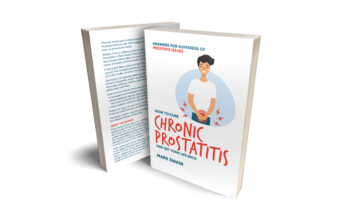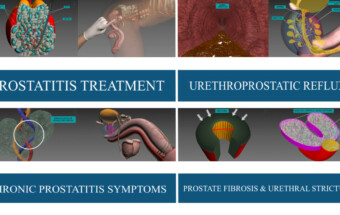Why do some people not have any Chronic Prostatitis symptoms?
Groups of Chronic Prostatitis Patients
First of all, there are two general groups of Chronic Prostatitis patients.
- There is a group of patients that suffer from primarily irritative symptoms (e.g. higher pelvic or testicular pain, burning in urination etc.) and more complications (e.g. sexual dysfunction or infertility), and they notice it while they are young.
- There is another group of patients, whose Chronic Prostatitis has developed subtly and insidiously, with only slightly obstructive symptoms. Due to the gradual deterioration of the situation, the patients fail to attribute small changes in sexual activity or libido until the problem becomes very visible many years later (e.g. disruption of sexual relationships). These are also the patients who may notice their CP when it becomes highly obstructive at a later age when they are usually old (i.e. more than 50 years old typically) and this is due to either the increased size of their prostate or the generation of cancerous cells. At this point they are usually given the advice to operate the prostate, which is a terrible situation to be, and is often the wrong choice.
It may not be intuitive but it is worse to be in the second group than the first. The second group takes too long to go to a specialised urologist, and the problem then becomes very chronic and thus takes a long time to treat.
Frequently misunderstood or misdiagnosed symptoms
In both groups, the main problem is that doctors often misdiagnose the patients. In the first group, the doctors may attribute the symptoms to psychological or musculoskeletal roots, without really finding anything that would objectively support this notion. In the second group, the symptoms are much more subtle:
- Oscillating sexual performance: The reason many patients are in denial for their Chronic Prostatitis, is because they sometimes achieve erections that they think are satisfactory. In truth, erections of a CP patient are not as rigid as they should be nor as long-lasting as normal. In addition, there start to be issues of premature ejaculations or sometimes delayed ejaculations, but due to oscilations in those symptoms, patients often like to think they are healthy.
- Small increase in frequency of urination: Instead of 3-4 times per day, it can increase to 7-8 (or more) times per day and the patient may think this is normal as it happens gradually. Most people attribute this to drinking more water, but this is obviously untrue.
- Gradual reduction of libido: As this is gradual, many people might attribute it to work-related stress or psychological situations. Some people attribute it to hormones, or they assume it is natural to decrease with age. Morning erections happen randomly and overall less frequently and are less rigid, but this is rare for the patients to notice.
To conclude, there are no Chronic Prostatitis patients without symptoms. There are patients with subtle unperceived symptoms or doctors who have failed to appropriately recognise and treat them properly.



